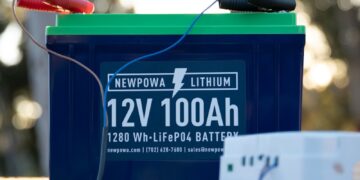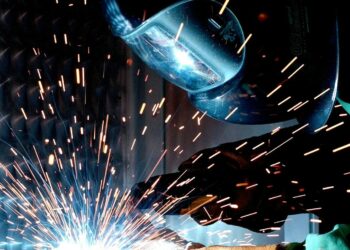The Engine Beneath Texas: How the Lower Colorado River Authority is Quietly Shaping the Future of Power, Water, and Progress
By Positive Phil | EcoBusinessNews.com
If you’ve ever paddled through the Highland Lakes, flicked on a light in Austin, or streamed your favorite series in Central Texas, you’ve likely felt the invisible force of the Lower Colorado River Authority (LCRA). It doesn’t wear a cape, but this organization is quietly one of the most powerful players in Texas infrastructure—literally and figuratively.
Founded in 1934 to tame a wild river and electrify rural towns, today LCRA is doing far more than turning on lights. It’s generating power, managing water, investing in broadband, and preparing Texas for a future where energy isn’t just abundant—it’s reliable, flexible, and smart.
A New Era of Dispatchable Power: Inside the Timmerman Plant
In the heart of Caldwell County, a transformation is underway. Workers in hard hats and safety vests are assembling a cutting-edge natural gas facility that isn’t just another power plant—it’s a resilience engine.
The Timmerman Power Plant, named after longtime LCRA board chair Tim Timmerman, will be home to two nimble peaker units powered by Wärtsilä reciprocating engines. These aren’t your grandfather’s turbines. Each unit will deploy ten fast-ramping engines that can go from 0 to full throttle in minutes—delivering 190 megawatts per unit (that’s enough to power over 100,000 homes when demand peaks). Think summer afternoons when the Texas grid groans under air conditioners and data centers running AI workloads—this is when peakers shine.
With a $1.63 billion investment in new generation and infrastructure, the Timmerman site isn’t just about output—it’s about timing, technology, and tactical readiness.
Why does this matter? Because in today’s power landscape, flexibility is king. Solar and wind are essential, but natural gas peakers give the grid the agility it needs when the sun sets or the wind dies down.
📍 Cool fact: Each engine at Timmerman is built by Wärtsilä, a Finnish manufacturer known for marine and energy tech. These units can start in under 5 minutes—think of them as the sports cars of the energy world.
⚡️ The Power Behind the Power: $5.9 Billion for Texas Transmission
Here’s the thing most Texans don’t see: while generation gets the glory, it’s the transmission lines—those silent steel towers stretching across the countryside—that actually get electrons to where they’re needed.
That’s why LCRA’s Transmission Services Corporation (TSC) is making an eye-popping $5.9 billion investment over the next five years in new lines, substation upgrades, and grid interconnections.
This includes projects to:
- Integrate renewable energy from solar and wind farms.
- Strengthen reliability in areas with aging infrastructure.
- Connect new economic drivers like data centers, EV fleets, and industrial campuses.
From rural ranchlands to growing tech corridors like San Antonio and Austin, these upgrades ensure Texas can grow without blackouts—no small feat in one of the nation’s fastest-growing states.
📍 Did you know? LCRA’s TSC is one of the largest non-investor-owned transmission providers in Texas, operating over 5,300 miles of lines and 400+ substations.
💧 Water Security for a Thirsty Future: Arbuckle Reservoir and Beyond
Electricity might grab headlines, but water is the lifeblood of Texas. LCRA knows this better than most. As stewards of the lower Colorado River and six Highland Lakes, the organization ensures that cities, farms, and industries have the water they need—not just today, but decades from now.
The crown jewel of LCRA’s water investment is the Arbuckle Reservoir—a 1,000-acre off-channel project in Wharton County designed to reduce agricultural pressure on the Highland Lakes. Set to be fully operational by late spring 2025, it will add 90,000 acre-feet of water supply for downstream users.
But it doesn’t stop there. LCRA is actively upgrading aging dams, rehabilitating critical infrastructure, and planning for the long-term climate resilience of Texas’s water systems.
📍 Fun fact: One acre-foot equals about 326,000 gallons. The Arbuckle Reservoir will hold enough water to supply roughly 500,000 people for a year.
Wind, Water & Watt-Hours: LCRA’s Clean Energy Commitments
While natural gas plays a stabilizing role, LCRA has not ignored the green transition. It’s already signed power purchase agreements for:
- 200 MW from the Papalote Creek II Wind Farm, and
- 141 MW from the Juno Solar Project in West Texas.
Meanwhile, LCRA’s hydroelectric plants quietly crank out about 300 MW of renewable electricity using water flows from the Highland Lakes.
By pairing renewables with dispatchable gas and robust grid infrastructure, LCRA is creating an energy portfolio that is both clean and controllable.
📍 Energy trivia: LCRA’s hydro units have been operational for over 70 years and are still a key part of its green energy base.
Beyond Power: Parks, Broadband, and Texas Pride
Energy and water might be the headlines, but LCRA is also investing where it counts for everyday Texans.
- Broadband: LCRA is deploying fiber across key assets to support not just smart grid operations, but also high-speed internet access in rural communities.
- Parks: The authority manages more than 40 public parks and natural areas, offering everything from camping to paddling to birdwatching. These green spaces give Texans a place to recharge—no outlets required.
- Education: LCRA funds school tours, safety training, and environmental education, planting the seeds for the next generation of water and energy stewards.
📍 Fun nugget: Matagorda Bay Nature Park, one of LCRA’s gems, sits on 1,600+ acres where the Colorado River meets the Gulf of Mexico—one of the most biologically diverse estuaries in the state.
Texas-Sized Trivia: Did You Know?
- LCRA can’t levy taxes or receive state funding. It operates entirely on earned revenue—a model of self-sufficiency since 1934.
- The Timmerman Peaker Plant will use engines designed to handle rapid on/off cycles, critical as AI and data centers push Texas demand to new peaks.
- LCRA employs more than 1,800 Texans and supports countless local contractors and service providers in energy, water, and construction sectors.
- Its transmission business helps connect wind and solar to the grid faster than many investor-owned utilities.
Positive Thoughts from Positive Phil
The Lower Colorado River Authority might not be a household name across the U.S., but in Texas, it’s one of the state’s most vital lifelines. From delivering power when we need it most to preserving the water that sustains our fields and families, LCRA is building something more than infrastructure—they’re building trust in the future.
And that, my friends, is worth celebrating.
For more information on LCRA’s initiatives and projects, visit www.lcra.org.
Note: This blog post incorporates information from various sources to provide a comprehensive overview of LCRA’s current and future projects.



















